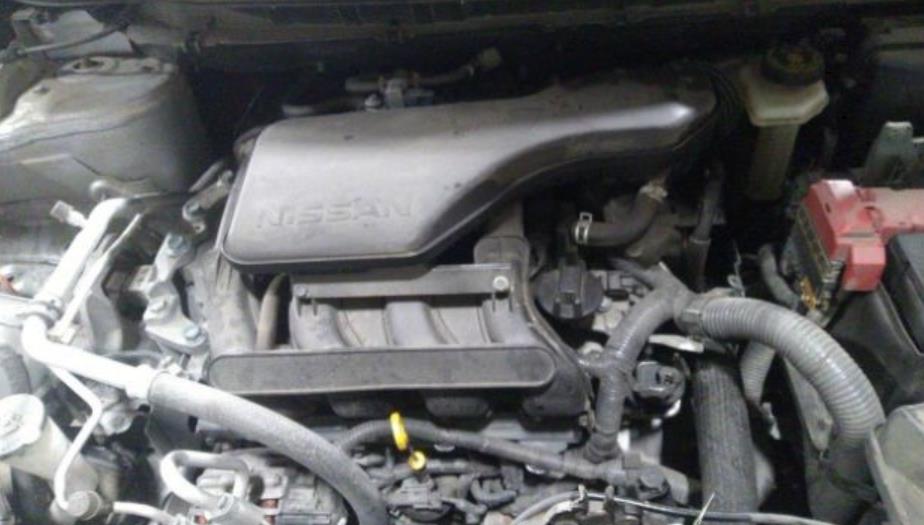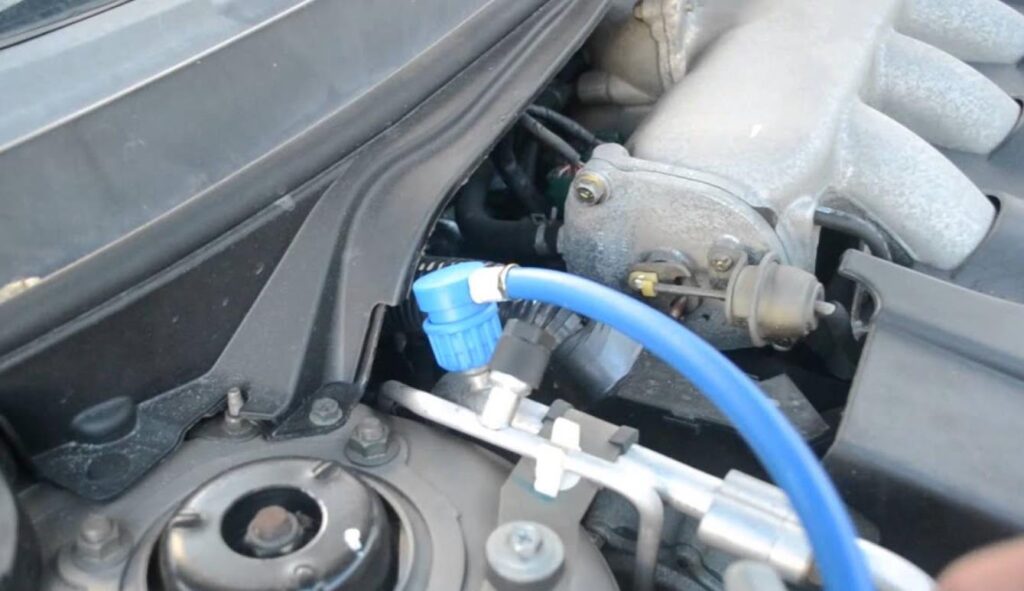How Much Freon Does A Nissan Rogue Take? Answered
If you own a Nissan Rogue, you’ve probably wondered, “How Much Freon Does A Nissan Rogue Take?” This is a crucial question, especially during hot summers. In this comprehensive guide, we’ll delve into the specifics of Freon and oil capacities for the Nissan Rogue’s air conditioning system.
Key Takeaways
- Type of Freon: HFC-134a is the recommended refrigerant for Nissan Rogue.
- Freon Capacity: The A/C system refrigerant capacity varies, but it’s around 1.10 lbs for the 2010 model.
- Oil Capacity: The oil capacity for the A/C system is approximately 5 oz of PAG 100 oil.
- Recharging Frequency: Timely recharging is essential for optimal performance.
- Safety Precautions: Always observe the safety guidelines mentioned in the refrigerant container.
How Much Freon Does A Nissan Rogue Take?
The straight answer is that the amount of Freon needed can vary based on the model year. For instance, the 2010 Nissan Rogue requires approximately 1.10 lbs of Freon. Always use HFC-134a as the A/C refrigerant for your Nissan Rogue.

Types of Freon
Freon is a critical component in air conditioning systems, but it’s essential to know that not all Freons are the same. There are several types of Freon, and using the wrong one can damage your air conditioning system. Let’s delve into the different types of Freon and their characteristics.
Chlorofluorocarbons (CFCs)
Chlorofluorocarbons, commonly known as R12, were once widely used in air conditioners. However, due to their harmful impact on the environment, particularly contributing to the greenhouse gas effect, their production ceased in 1994. If you have an older system that uses R12, it’s time to consider an upgrade.
R22 (Freon)
R22 is what most people commonly refer to as Freon. It has been used for decades in central air conditioning systems. However, like R12, R22 has been linked to environmental damage, such as ozone depletion. As a result, it was phased out by the Clean Air Act of 2010 and is no longer in use for new systems.
R410A (Puron)
R410A, also known as Puron, is the modern replacement for R22. It lacks chlorine in its composition, making it less harmful to the environment. Systems that run on Puron are noted to be more efficient, offer better air quality, and are more reliable.
However, it’s important to note that R410A cannot be used in systems that previously ran on R22; an upgrade or replacement will be necessary.
Oil Capacity
Oil capacity is a critical factor in maintaining your vehicle’s engine health. It refers to the amount of oil your engine can hold, which is essential for lubrication and cooling. Typically, engines require between five to eight quarts of oil.
However, the size of your engine can significantly impact this. For example, a 4-cylinder engine may need around five quarts, while a 6-cylinder engine might require six quarts. Knowing your car’s oil capacity is crucial for both cooling and lubrication.
How to Determine Your Car’s Oil Capacity?
There are several ways to find out how much oil your car needs. The most straightforward method is to consult your car’s owner’s manual. It will usually specify the type of oil you need, its viscosity, and the amount required.

Another way is to check the product manual of the oil you’re considering. It will provide information on whether the oil is suitable for your car, especially in specific climates.
Types of Oil to Choose
The type of oil you should select depends on various factors, including the climate and your driving patterns. Conventional oil is generally suitable for older engines and colder weather, while synthetic oil is ideal for high-stress engine activities and extreme temperatures.
High-mileage oil is recommended for cars with over 75,000 miles as it can improve oil efficiency.
Recharging Frequency
Recharging frequency refers to how often a device or system needs to be recharged to maintain optimal performance. This term is commonly used in the context of batteries, such as those in laptops, smartphones, and electric vehicles.

The frequency of recharging can impact the overall lifespan of the battery. For instance, lithium-ion batteries, commonly used in modern devices, have a certain number of charge cycles before their efficiency starts to decline.
Factors Affecting Recharging Frequency
Several factors can influence how often you need to recharge a device. These include the device’s battery capacity, your usage patterns, and the type of activities you perform on the device.
For example, gaming or video streaming will drain a smartphone battery faster than simple tasks like texting or browsing. Understanding these factors can help you manage your recharging routine better.
Best Practices for Recharging
To maximize battery life, it’s generally recommended to keep the battery level between 20% and 80%. This range is considered the “sweet spot” for lithium-ion batteries.
Some modern devices even have settings that limit the charge to 80% to prolong battery lifespan. Additionally, it’s advisable to avoid letting the battery drain completely before recharging, as this can stress the battery and reduce its longevity.
Safety Precautions
Always observe and follow the precautions described in the refrigerant container. Safety should never be compromised when dealing with potentially hazardous materials.
Why Freon and Oil Capacities Matter?
Understanding the correct Freon and oil capacities for your vehicle is not just a matter of routine maintenance; it’s crucial for the longevity and efficiency of your car. Let’s delve into why these capacities are so important.

Ensures Optimal Performance
The right amount of Freon ensures that your car’s air conditioning system works efficiently. Too little or too much can lead to poor cooling and even damage the system.
Similarly, the correct oil capacity ensures that your engine is adequately lubricated, reducing friction and wear.
Prevents Overheating
Insufficient oil can lead to increased friction and, consequently, overheating of the engine. Overheating can cause severe damage, including warping of engine parts. Likewise, incorrect Freon levels can lead to inefficiencies that cause the A/C compressor to overheat.
Extends Lifespan
Proper oil levels extend the lifespan of your engine by reducing wear and tear. The same goes for the correct amount of Freon, which ensures that the A/C system runs smoothly, reducing the strain on the compressor and other components.
Environmental Considerations
Using the correct type and amount of Freon is also an environmental concern. Older types like R12 and R22 are harmful to the ozone layer, and using them irresponsibly can contribute to environmental degradation.
Cost-Efficiency
Knowing the correct capacities can save you money in the long run. Overfilling or underfilling can lead to inefficiencies that require costly repairs. Proper maintenance, guided by knowing the right capacities, can prevent these unnecessary expenses.
How to Recharge the A/C System?
Recharging your Nissan Rogue’s A/C system isn’t just about pouring in Freon; it’s a meticulous process. First, you’ll need to locate the low-pressure port, which is usually on the passenger side near the firewall.
Attach the A/C Pro recharge hose to this port. Then, start the engine, turn the A/C on high, and follow the gauge instructions to fill the system.

It’s crucial to monitor the pressure gauge while recharging. Overcharging can lead to inefficient cooling and even damage the compressor. Always aim for the ‘green zone’ on the gauge for optimal performance.
Signs Your A/C System Needs Recharging
If your A/C isn’t as cold as it used to be, that’s a clear sign it needs recharging. Another indicator is a hissing sound, which usually means there’s a leak. Leaks are dangerous because they can lead to complete system failure.
Don’t ignore these signs. A malfunctioning A/C system can affect other parts of your vehicle. For instance, a leaking A/C system can lead to moisture buildup, which can rust parts of your car.
Cost of Recharging the A/C System
The cost of recharging your Nissan Rogue’s A/C system can vary based on your location and the severity of the issue.
On average, you can expect to pay between $100 and $150 for a professional recharge. DIY kits are cheaper but require some technical know-how.

Remember, going for the cheapest option isn’t always the best. Quality service ensures that your A/C system runs efficiently for a longer time, saving you money in the long run.
Environmental Impact
The type of Freon used in your Nissan Rogue, HFC-134a, is considered to be more eco-friendly than its predecessor, R-12. However, it’s still not entirely benign. Improper handling can lead to leaks, which contribute to greenhouse gas emissions.
Always ensure that you or your service provider follows proper procedures for capturing and recycling Freon. This not only protects your vehicle but also has a lesser impact on the environment.
DIY vs Professional Service
Doing it yourself can save you money, but it comes with risks. If you’re not familiar with the A/C system, you could end up causing more harm than good. On the other hand, professional service guarantees a thorough job, albeit at a higher cost.
Weigh the pros and cons carefully. If you’re confident in your abilities and have the necessary tools, a DIY approach can be rewarding. Otherwise, it’s better to leave it to the experts.
What Type Of Freon Does A Nissan Rogue Take?
The Nissan Rogue uses R-134a type of Freon for its air conditioning system. This has been consistent across various model years. For instance, from 2008 to 2013, the Rogue used R-134a with a refrigerant capacity of 18 Oz.

For the years 2014-2016, the capacity was slightly reduced to 17.60 Oz. It’s crucial to use the specified type and amount of Freon to ensure the A/C system functions optimally. Using the wrong type can lead to inefficiencies and even damage the system.
How Many Oz Of AC Refrigerant Does A Car Need?
The amount of AC refrigerant a car needs can vary depending on the make and model. For the Nissan Rogue, most models require 17.60 Oz. of R-134a refrigerant. Older models might need a bit more, around 18 Oz.
It’s essential to adhere to these specific capacities to maintain the efficiency and longevity of your A/C system. Overcharging or undercharging can lead to various issues, including reduced cooling and potential damage to the A/C compressor.
How Much Freon Does A 2010 Nissan Rogue Hold?
The 2010 Nissan Rogue typically holds around 18 Oz of R-134a Freon. This information is crucial for anyone looking to recharge their A/C system. Overcharging or undercharging can lead to inefficiencies and even damage the A/C system.

Therefore, it’s essential to know the exact amount of Freon your specific model requires. Always consult your vehicle’s manual or a professional for the most accurate and personalized advice.
How Much R-134a Refrigerant Do I Need?
The amount of R-134a refrigerant you’ll need depends on the make and model of your vehicle. For the 2010 Nissan Rogue, you would need approximately 18 Oz.
It’s crucial to adhere to these specific capacities to maintain the efficiency and longevity of your A/C system. Overcharging or undercharging can lead to various issues, including reduced cooling and potential damage to the A/C compressor.
Conclusion
Understanding how much Freon a Nissan Rogue takes is essential for both comfort and maintenance. Always use HFC-134a and adhere to the recommended capacities for Freon and oil. Stay tuned for Part 2, where we’ll cover frequently asked questions and more.
Whether you opt for a DIY approach or professional service, understanding these aspects ensures that you make informed decisions. Stay cool and drive safe!
Top FAQ’s
What is the Cost of a Professional A/C Recharge?
The cost can vary significantly based on your location and the specific issues with your A/C system. On average, expect to pay between $100 and $150 for a professional recharge. While DIY kits are cheaper, they require a certain level of expertise. Always weigh the pros and cons before making a decision.
Can I Use a Fast Charging Method for the A/C System?
The term “fast charging” is generally associated with electric vehicles and is not applicable to the A/C system in a Nissan Rogue. The A/C system requires a meticulous recharging process that should not be rushed, as doing so could lead to overcharging and system damage.
What Are the Environmental Concerns Related to Freon?
The Freon used in the Nissan Rogue, HFC-134a, is more eco-friendly compared to older types like the R-12. However, it’s not entirely benign. Leaks can contribute to greenhouse gas emissions. Always ensure proper handling and recycling of Freon to minimize environmental impact.

Welcome to the exhilarating world of Matt Rex, a professional car racer turned renowned vehicle enthusiast. Immerse yourself in his captivating blog as he shares heart-pounding adventures, expert reviews, and valuable insights on cars, trucks, jets, and more. Fuel your passion for speed and discover the beauty of vehicles through Matt’s engaging stories and meticulous expertise. Join the ever-growing community of enthusiasts who find inspiration and expert advice in Matt Rex’s blog—a digital hub where the thrill of speed meets the pursuit of knowledge.







![How To Fix Tesla Bluetooth Lag? [Fix In 5 Steps]](https://www.turbochaos.com/wp-content/uploads/2023/08/How-To-Fix-Tesla-Bluetooth-Lag.jpg)